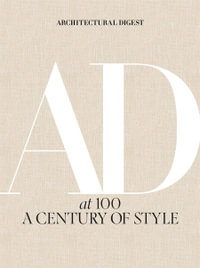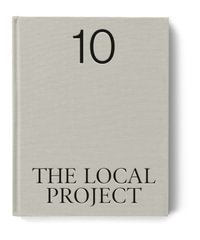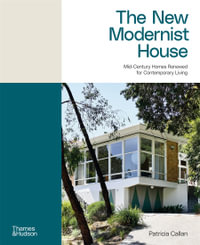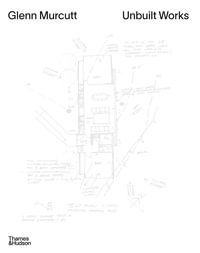
The Architect in Practice
By: David Chappell, Michael H. Dunn
Paperback | 8 January 2016 | Edition Number 11
At a Glance
512 Pages
Revised
24.4 x 17.0 x 1.9
Paperback
RRP $97.95
$63.40
35%OFF
or 4 interest-free payments of $15.85 with
orAims to ship in 7 to 10 business days
Throughout its many editions, The Architect in Practice has remained a leading textbook used in the education of architects. While the content of the book has developed, the message and philosophy has remained constant: to provide students of architecture and young practitioners with a readable guide to the profession, outlining an architect's duties to their client and contractor, the key aspects of running a building contract, and the essentials of management, finance and drawing office procedure.
The eleventh edition follows in that tradition. The text has been brought up to date to ensure it follows the new RIBA Plan of Work 2013 as the guide to the architect’s workflow. In addition, a number of changes to standard forms of contract were made with the publication of the JCT 2011 suite of contracts, and the RIBA Standard Form for the Appointment of an Architect 2010 (2012 Revision). These new forms are fully covered. In addition, the opportunity has been taken to reorganise the layout so that the content flows in a way that is more consistent with current architectural practice, and to deal with the increasing use of BIM. The eleventh edition of The Architect in Practice continues to provide the guidance and advice all students and practising architects need in the course of their studies and in their profession.
Acknowledgements xvii
Abbreviations and Acronyms xix
Part 1 Practice 1
A THE PRACTITIONER 3
1 The Construction Industry 3
1.1 Introduction 3
1.2 Significance of the construction industry 3
1.3 A changing industry 4
1.4 Clients 6
1.5 Contractors 7
1.6 Consultants 9
1.7 Clerk of works 13
1.8 Construction industry bodies 14
References and notes 21
2 Academic and Professional Qualifications 22
2.1 Introduction 22
2.2 Relevant bodies 24
2.3 Architectural education and training 29
2.4 Examination of professional practice 36
2.5 Approval of educational programmes 36
2.6 Practising in the United Kingdom 41
2.7 Practising in Ireland 42
2.8 Practising in Egypt, Nigeria and Malaysia 43
2.9 Maintenance of standards, regulation and codes of conduct 46
2.10 ARB’s standards of professional conduct and practice 47
2.11 RIBA code of professional conduct 53
2.12 The RIAI code of conduct 55
2.13 Continuing professional development 55
References and notes 57
3 Employment Opportunities 59
3.1 Introduction 59
3.2 Private practice 60
3.3 Local authority 62
3.4 Other public sector organisations 63
3.5 Large companies 64
3.6 Contractors 64
3.7 Manufacturers 65
3.8 Academia 66
3.9 Other specialisation 67
3.10 Adjudicator, arbitrator or expert witness 68
References and notes 69
4 Employment 71
4.1 Finding employment 71
4.2 Acceptable job titles 88
4.3 Employment 89
4.4 Job description 92
4.5 Hours of work 93
4.6 Overtime 95
4.7 Salary 96
4.8 Benefits 97
4.9 Professional activities 98
4.10 Expenses 99
4.11 Leave 100
4.12 Disciplinary and grievance procedure 103
4.13 Notice and dismissal 104
4.14 Spare time practice 105
4.15 Monitoring of telephone calls and e-mails 107
4.16 Discrimination 107
References and notes 109
5 Types of Practice 110
5.1 Sole principal 110
5.2 Partnerships 111
5.3 Incorporation 117
5.4 Co-operative 121
5.5 Group practice 121
5.6 Developer/architect/contractor 122
References and notes 123
6 Setting Up in Practice 124
6.1 Sole principal 124
6.2 The decision 124
6.3 Timing 125
6.4 Practical points to decide 126
6.5 Business plan 131
6.6 Enlarging the practice 132
References and notes 134
B PRACTICE MANAGEMENT 135
7 Management Principles 135
7.1 Objectives 135
7.2 Leadership 136
7.3 Communication 137
7.4 Delegation 138
7.5 Motivation 139
References and notes 140
8 General Office Practice 141
8.1 Introduction 141
8.2 Telephone, facsimile (fax) and e-mail 141
8.3 Information technology 144
8.4 Letter writing 145
8.5 Reports 146
8.6 Filing 147
8.7 Office-based meetings 149
8.8 Drawing office practice 149
8.9 Computer-aided design 153
8.10 Presentation 154
8.11 Reproduction 155
8.12 Work programming 155
8.13 Sources of information 156
References and notes 165
9 Marketing 168
9.1 Active marketing 168
9.2 Brochure 170
9.3 Website 171
9.4 Social media 172
9.5 Advertising 173
9.6 Contacts 173
9.7 Competitions 174
9.8 Frameworks 175
9.9 Retaining clients and recommendations 175
References and notes 176
10 Insurance 177
10.1 Introduction 177
10.2 Premises and contents 179
10.3 Public liability 180
10.4 Employer’s liability 181
10.5 Professional indemnity 181
10.6 Latent defects insurance 183
10.7 Other insurances 184
References and notes 184
11 Finance and Accounts 185
11.1 Introduction 185
11.2 Accounts 185
11.3 Profit and loss account 185
11.4 Balance sheet 186
11.5 Assets 188
11.6 Liabilities 188
11.7 Capital 189
11.8 Cash-flow forecasting and budgeting 190
11.9 Books of account 191
11.10 Fee invoicing 191
11.11 Value added tax (VAT) 191
11.12 Computerisation 192
11.13 Annual accounts/auditing 192
11.14 Staff time records 193
References and notes 195
Part 2 Running a Project 197
12 The RIBA Plan ofWork 2013 199
12.1 Sequential framework and Plan ofWork 199
12.2 The Plan ofWork explained 202
12.3 Building information modelling (BIM) 208
12.4 BIM overlay to the Plan ofWork 209
12.5 Green principles 209
12.6 Green overlay to the Plan ofWork 210
12.7 New words and phrases 211
References and notes 212
13 Stage 0: Strategic Definition – Appointment 214
13.1 Introduction 214
13.2 Scope of services 215
13.3 Determination of the fee 233
13.4 Terms of appointment 240
13.5 Consultants 243
13.6 Project managers 245
References and notes 248
14 Stage 0: Strategic Definition – Terms 250
14.1 Standard forms of agreement 250
14.2 Standard Agreement 2010 (2012 revision): Architect 251
14.3 Duty of care agreements (collateral warranties) 280
References and notes 287
15 Stage 1: Preparation and Brief 288
15.1 Feasibility studies 288
15.2 Site and building acquisition 293
15.3 Surveys 295
15.4 The brief 301
15.5 Reporting 302
References and notes 303
16 Stage 2: Concept Design 304
16.1 Design data 304
16.2 Concept design and its development 305
16.3 Cost estimates and planning 306
16.4 Procurement paths and implications for the professional 307
16.5 Contract selection and implications 317
16.6 Guaranteed maximum price 320
16.7 PFI Contracts 322
16.8 Partnering 323
References and notes 325
17 Stage 3: Developed Design 327
17.1 General 327
17.2 Planning applications and approvals 328
17.3 Other approvals 353
17.4 Property 353
References and notes 361
18 Stage 4: Technical Design 363
18.1 Technical design 363
18.2 Production information 366
18.3 Building regulations 2010 (as amended) 369
References and notes 379
19 Stage 4: Technical Design: Tender Documentation and Tender Action 380
19.1 Introduction 380
19.2 Co-ordinated project information 381
19.3 Bills of quantities 383
19.4 Specifications 390
19.5 Schedules of work 393
19.6 Activity schedules 393
19.7 Tendering 393
19.8 Preparing the contract documents 403
References and notes 404
20 Stage 5: Construction 405
20.1 Contractor’s programme 405
20.2 Meetings 408
20.3 Site inspections 413
20.4 Safety 414
20.5 Architect’s instructions and variations 415
20.6 Variations and their valuation 418
20.7 Controlling costs 422
20.8 Workmanship and materials 423
20.9 Certificates and payments 426
20.10 Delays and extensions of time 435
20.11 Financial claims 438
20.12 Termination 440
References and notes 443
21 Stage 6: Handover and Close Out 446
21.1 Practical completion 446
21.2 Rectification period 451
21.3 Adjustment of contract sum 454
21.4 Final certificate 457
References and notes 461
22 Stage 7: In Use 463
22.1 Review of project 463
22.2 Architect’s review 464
22.3 Client review 466
22.4 Review of building in use 467
References and notes 467
Table of Cases 468
Index 473
ISBN: 9781118907733
ISBN-10: 1118907736
Published: 8th January 2016
Format: Paperback
Language: English
Number of Pages: 512
Audience: Professional and Scholarly
Publisher: John Wiley & Sons (UK)
Country of Publication: US
Edition Number: 11
Edition Type: Revised
Dimensions (cm): 24.4 x 17.0 x 1.9
Weight (kg): 0.87
Shipping
| Standard Shipping | Express Shipping | |
|---|---|---|
| Metro postcodes: | $9.99 | $14.95 |
| Regional postcodes: | $9.99 | $14.95 |
| Rural postcodes: | $9.99 | $14.95 |
How to return your order
At Booktopia, we offer hassle-free returns in accordance with our returns policy. If you wish to return an item, please get in touch with Booktopia Customer Care.
Additional postage charges may be applicable.
Defective items
If there is a problem with any of the items received for your order then the Booktopia Customer Care team is ready to assist you.
For more info please visit our Help Centre.
You Can Find This Book In
This product is categorised by
- Non-FictionArts & EntertainmentArchitectureProfessional Practice of Architecture
- Non-FictionArts & EntertainmentArchitectureIndividual Architects & Architectural Firms
- Text BooksTextbook FinderUniversity of Technology Sydney11502 Practice: Finance & Project Management
- Non-FictionArts & EntertainmentArchitecture























